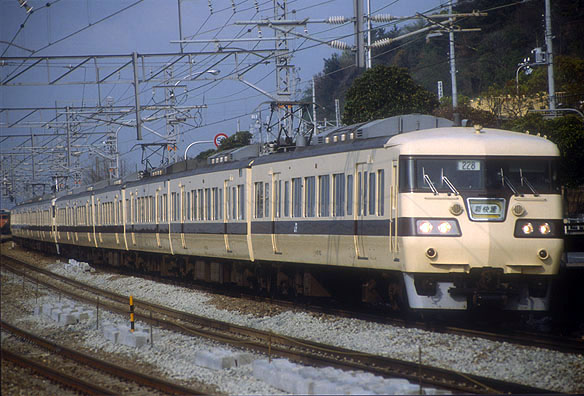Background and overview
Japanese National Railways introduced 117-100 series suburban DC electric
multiple unit (EMU) trains in order to improve the frequency of special
rapid services in Kansai area and Nagoya. three 6-car sets were delivered
for Kansai area, and only 18 end cars were delivered for Nagoya area, in
order to short 6-car sets into 4 cars.
Car body
Bodies are constructed by steel. They are equipped with 2 double-leaf semi-automatic/full-automatic
sliding doors on each side of the vehicles. They feature pairs of drop
side windows.
Bogies
Their bogies are DT50C/TR235E featuring bolster-less secondary air suspension,
corn-shaped multilayered rubber spring journal supporting system, and double
collar sealed roller bearing for improved stability at high speed. Traction
device of the bogie is multilayered rubber spring.
Accommodation
Passenger accommodation is contoured switchable transverse seating with
910mm seating pitch. End cars, Kuha116-100, delivered to Keihanshin are
equipped with a Japanese style toilet. The other end cars are not equipped
with a toilet, so Kuha116s delivered to Nagoya area were classified into
-200 subseries.
Operations
Although 117-100 series had been used on special rapid services in Keihanshin
area and rapid services in Nagoya area, they have withdrawn from special
rapid services, and now remaining 117-100 series are used on the rapid
trains in Okayama. |
|

